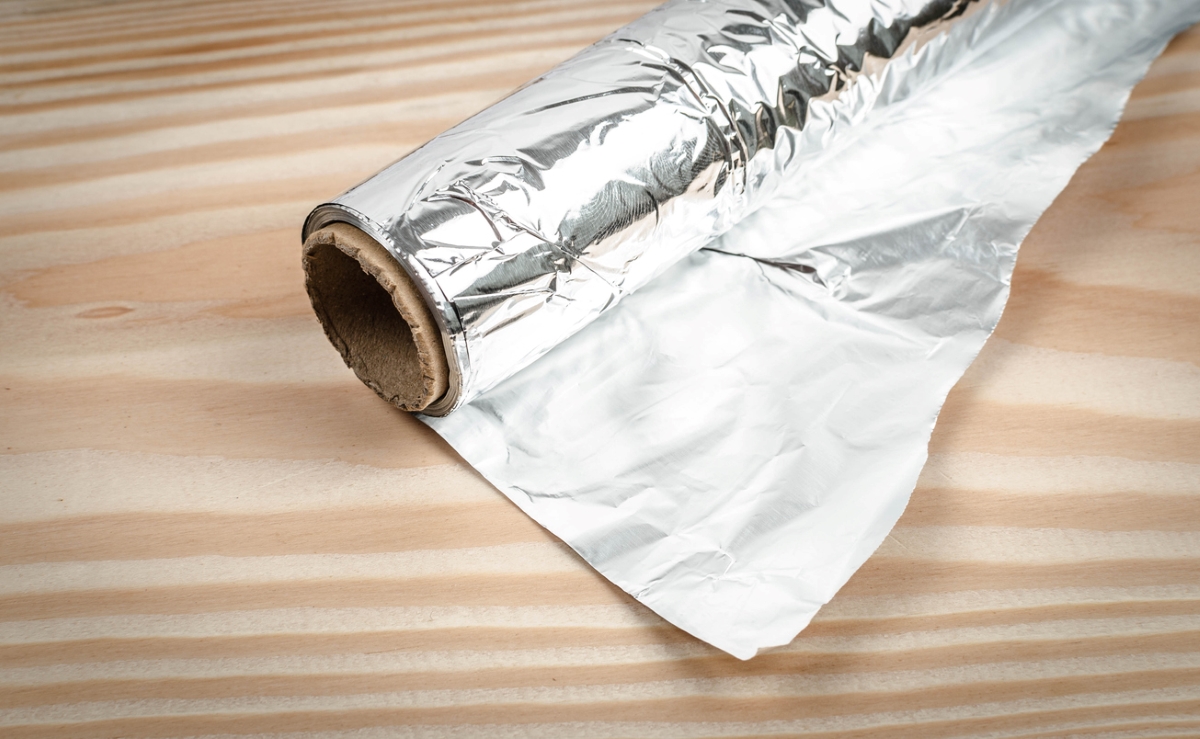

We may earn revenue from the products available on this page and participate in affiliate programs. Learn More ›
Since its inception as a kitchen superhero in the early 1900s, aluminum foil has transcended its traditional role in the kitchen, and has become an innovative multitasker around the house. Since it is reusable, flexible, and durable, aluminum foil is the go-to tool for all sorts of tasks: painting, sharpening scissors, even improving the efficiency of radiators. This household staple can also streamline ironing by acting as a heat-reflective surface, and in a pinch, serves as a makeshift funnel. The next time you find yourself on the verge of tossing a barely used square of foil, put it to use in the laundry room, or save it for another one of these useful purposes.
1. Remove Static From Clothing
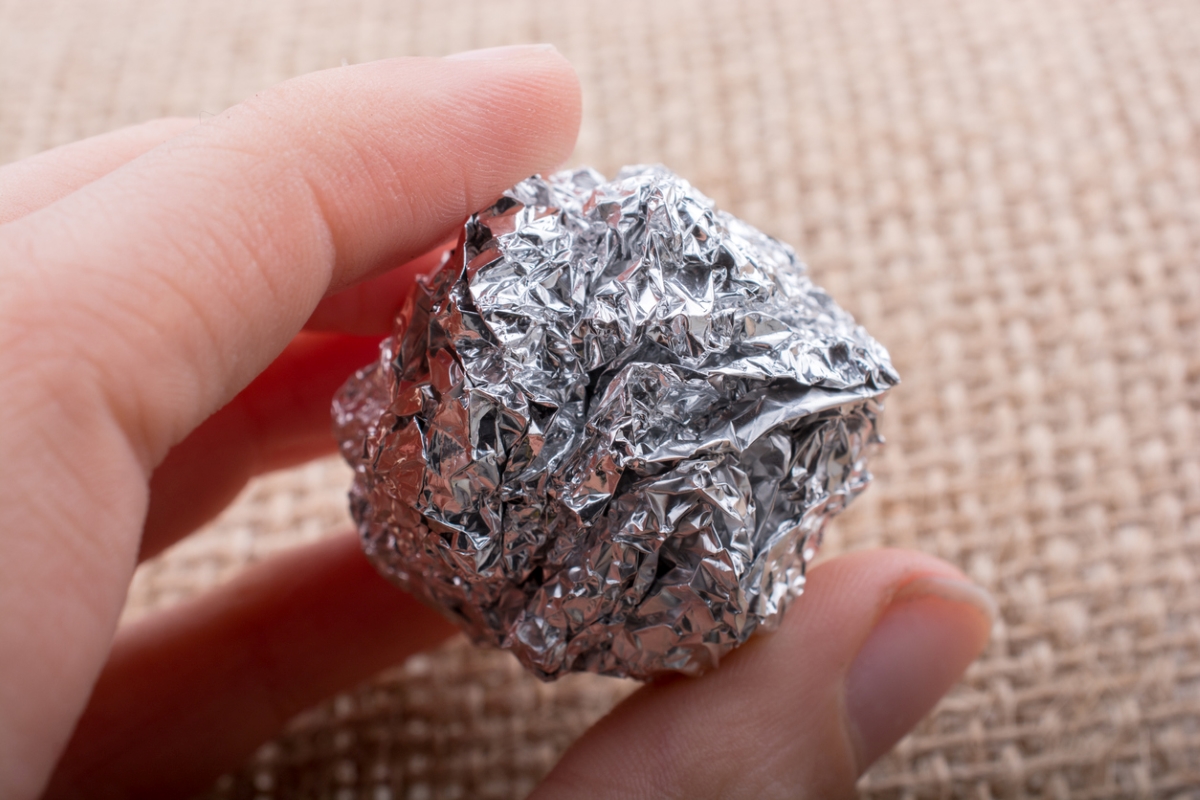
There’s nothing worse than heading to work with your favorite clothes clinging together like magnets. Luckily, with a bit of aluminum foil, you can help get rid of the static. To do this, simply take a flat sheet of aluminum foil and rub it over the clothing. You could also try preventing the static by tossing three or more aluminum balls into the dryer with your clothes to help remove the static as much as possible.
RELATED: How to Get Rid of Dust: 20 Simple Home Cleaning Tips
2. Iron Two Sides at Once
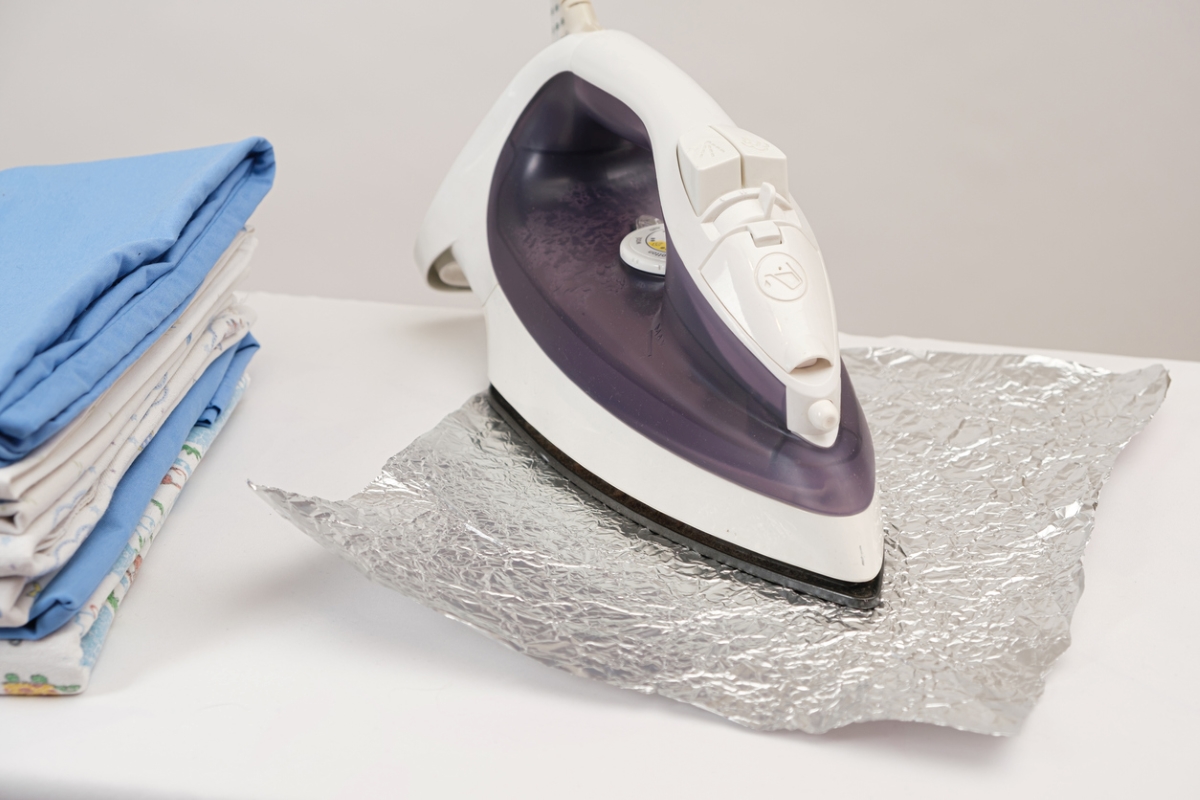
Tuck a sheet of foil underneath the ironing board cover so that it reflects heat from the iron. This allows you to iron both sides of your garment at once, and cuts ironing time nearly in half.
RELATED: The 13 Best Things You Can Buy for Your Laundry Room (for Under $50)
3. Soak Up Shoe Odor

If you’ve got a few pairs of smelly sneakers, aluminum foil can help. Tear three pieces of foil (12 inches by 12 inches) for each shoe and roll them into ball-like shapes. Ensuring your sneakers are dry, insert the foil balls inside each shoe and leave them in overnight. The foil will absorb unpleasant odors, and unlike powders or sprays, won’t leave any residue or mess behind.
RELATED: How to Wash Shoes in a Washing Machine
4. Sharpen Scissors
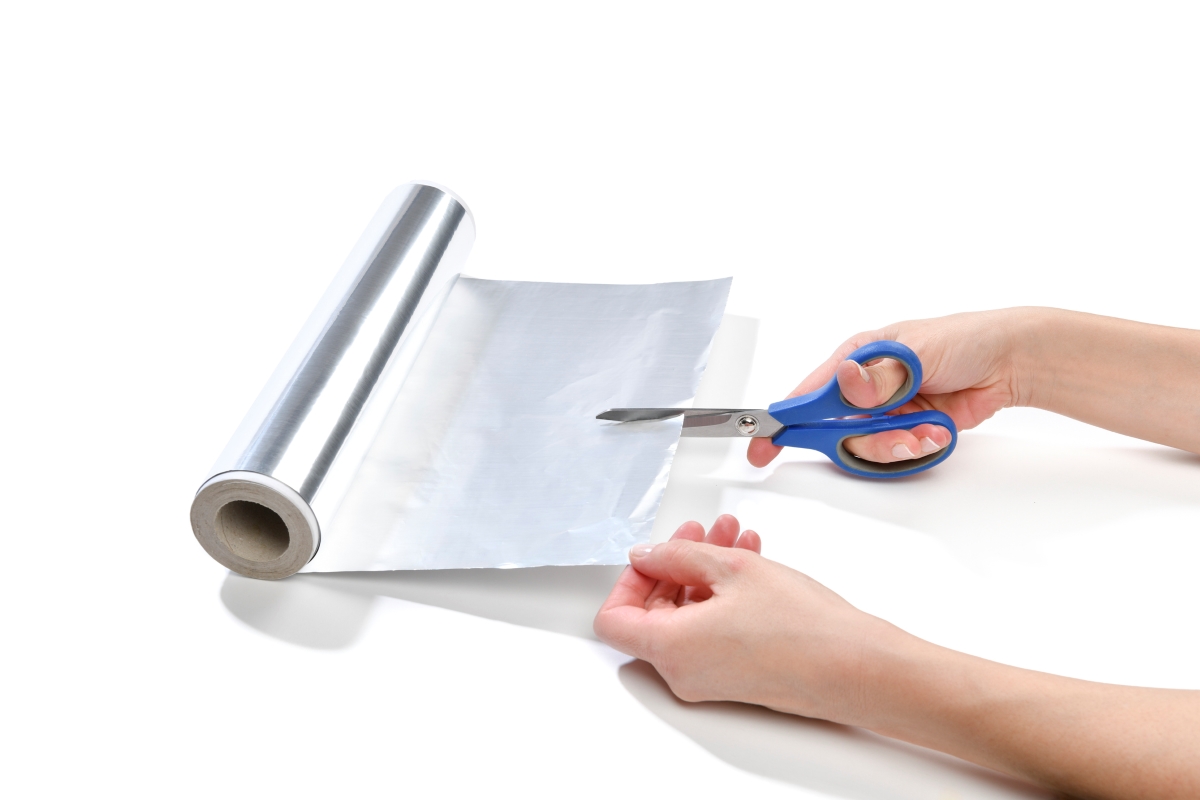
Dull scissors are the bane of crafters everywhere. Sharpen worn-down scissors by stacking several layers of aluminum foil, folding them in half, and then cutting them with the blades; six to eight swipes should leave your scissors nice and sharp.
RELATED: 30 DIY Home Projects Absolutely Anyone Can Do
5. Move Heavy Furniture
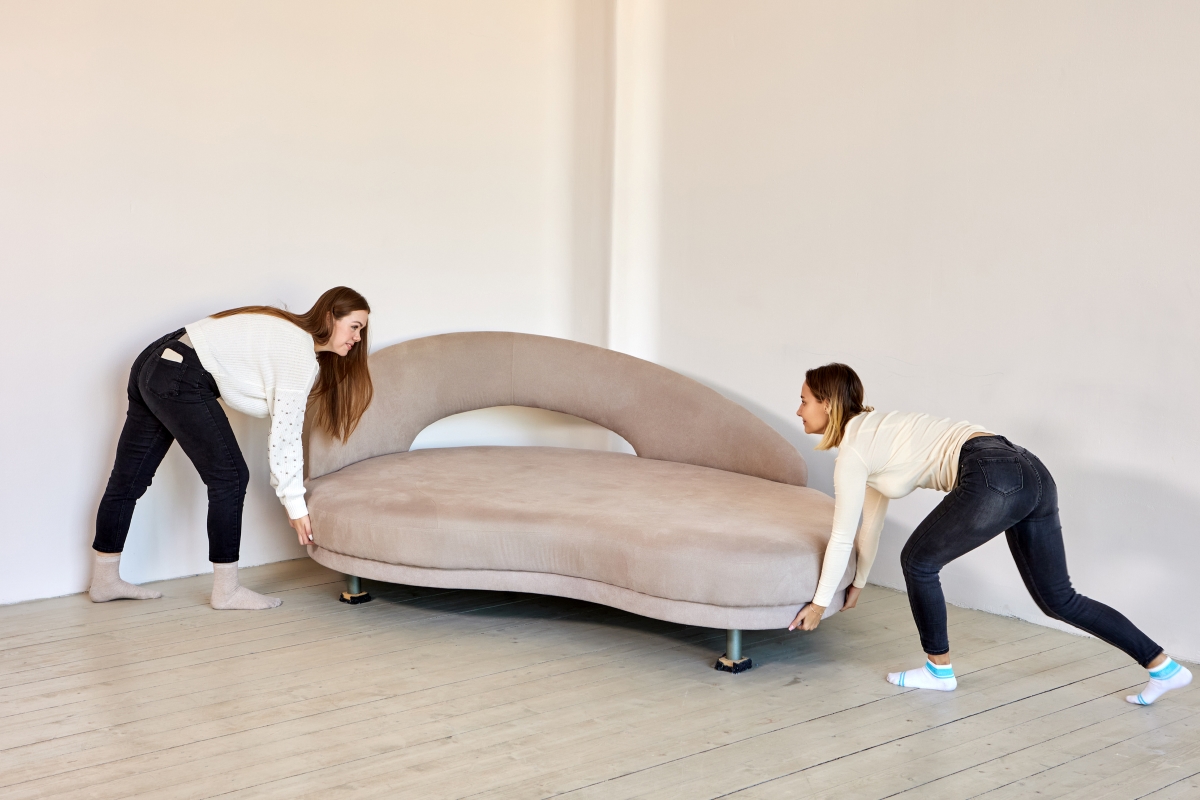
Foil makes an inexpensive improvised slider to help move heavy furniture. Simply wrap foil around the bottom of the legs, dull side down. (The dull side is more slippery than the shiny side.) The foil will make it easy to slide the furniture across the floor—no heavy lifting required.
RELATED: The Best Furniture Sliders
6. Pour Liquids
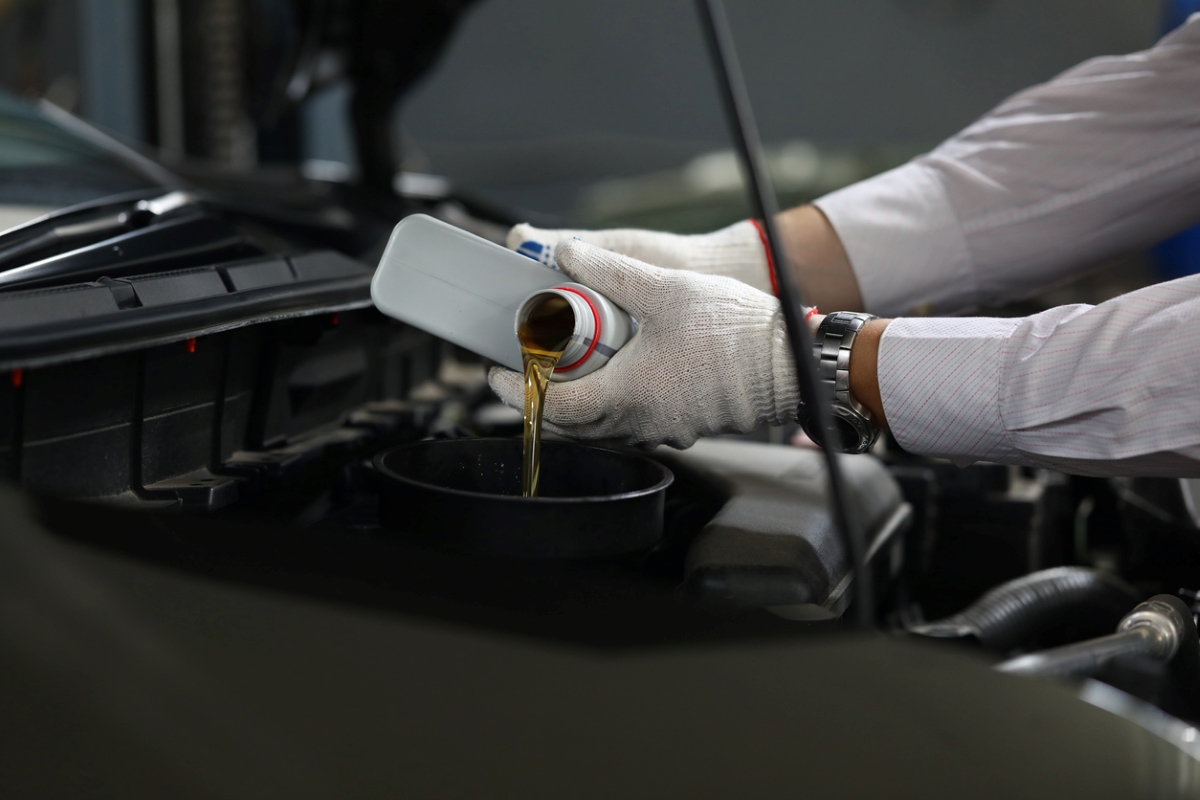
Use foil to make an instant, disposable funnel to transfer messy liquids like oil, or sticky ones like honey. Simply double up a length of heavy-duty aluminum foil and mold it into the shape of a cone. The highlight of this easy hack is that there’s no messy cleanup—when you’re done, just throw it away, or clean it off and toss it into the recycling bin.
7. Catch Oven Spills

While it’s been thought that you can line the bottom of your oven with foil, research shows that doing so can damage the appliance over time. Instead, place a sheet of heavy-duty foil on the oven rack beneath the dish you are making to catch any spills before they reach the bottom of the oven. And to really get your money’s worth, before tossing the old foil, crumple it up and use it to scrub off stuck-on food debris from grates or baking pans.
RELATED: How to Clean an Oven
8. Boost a Battery Pack
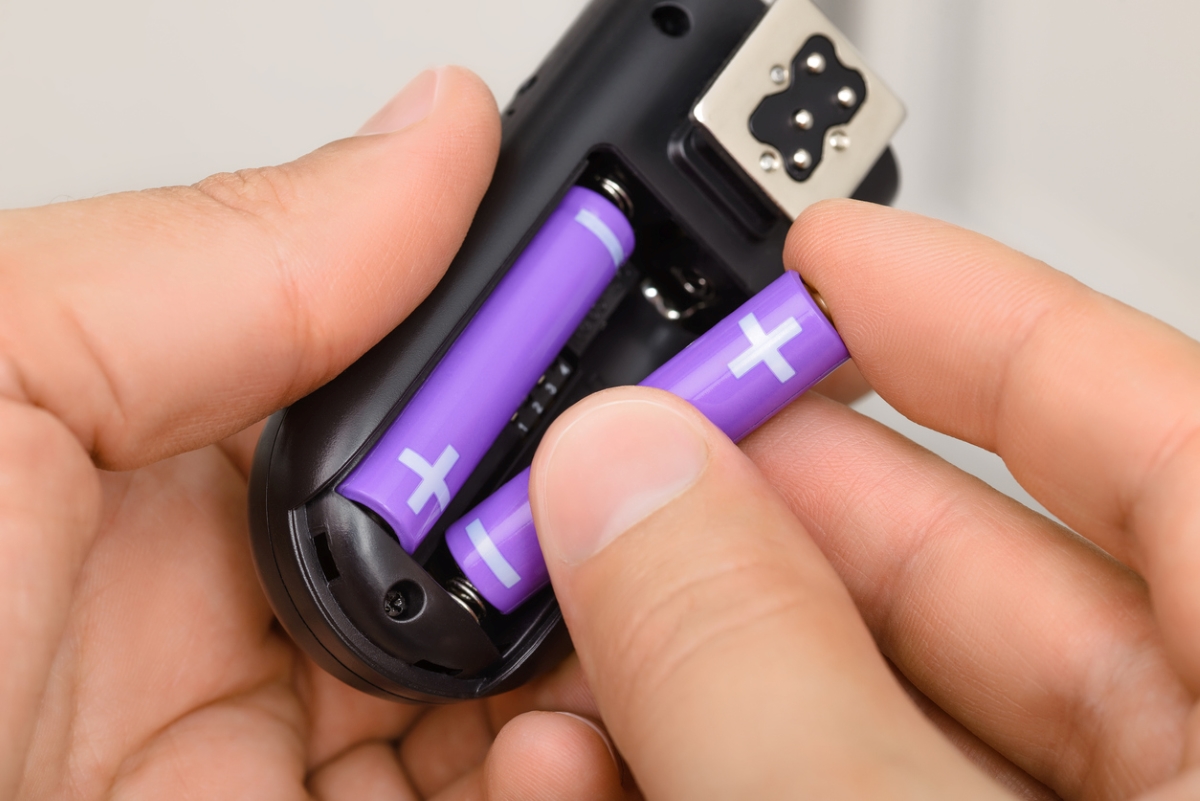
The springs that hold the batteries in your remotes, flashlights, and toys can lose tension over time and gradually cause your devices to stop working. Use a small piece of foil as a quick remedy to this annoying problem. Fold the foil into a small pad that is thick enough to wedge between the batteries and the spring. This will eliminate the extra space and help keep everything in place.
RELATED: The Right Way to Dispose of Batteries
9. Protect Hardware While Painting
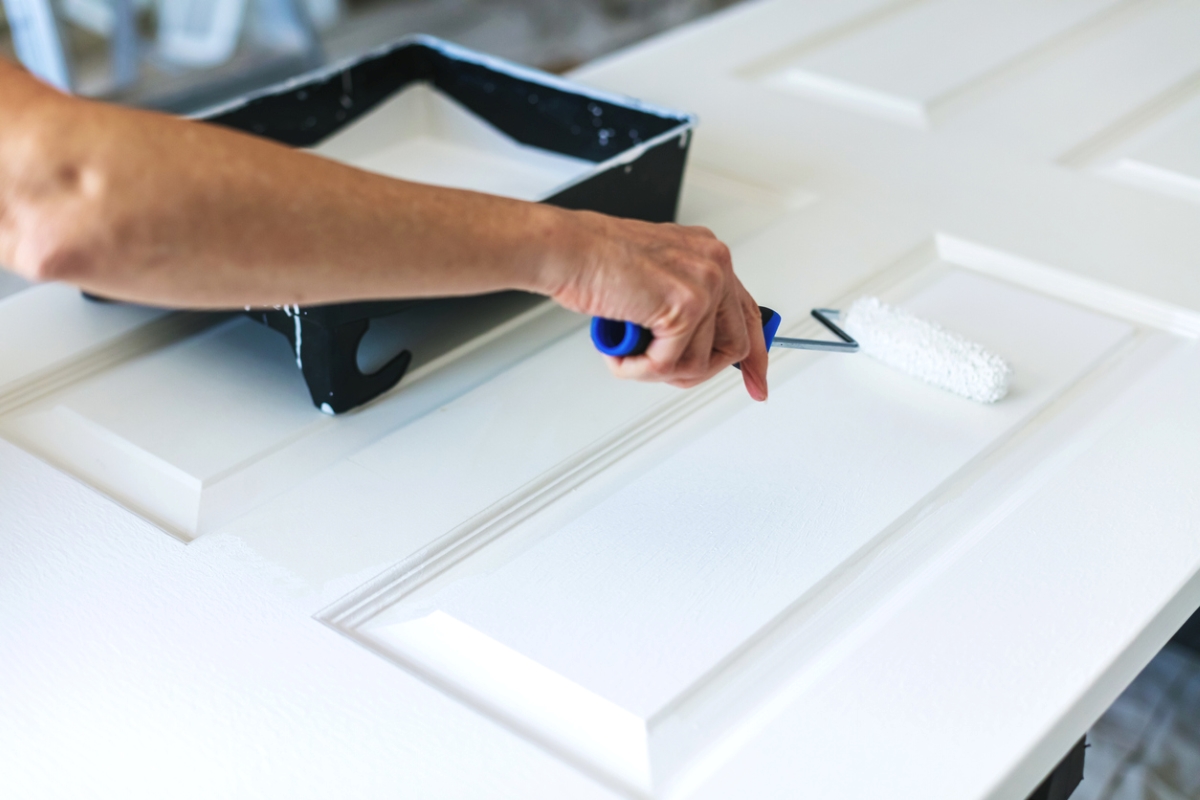
Foil can be a time-saving helper on your next paint project. Eliminate the tedious task of removing door hardware by wrapping knobs and hinges in aluminum foil to protect them from paint spills. You can even line the roller pan with foil to make cleanup a breeze. And if you’re not quite done painting but need to run an errand, try wrapping your paintbrush in foil, then storing it in the fridge.
RELATED: 13 Top Tips to Make Any Paint Job Go Faster
10. Fix Flooring
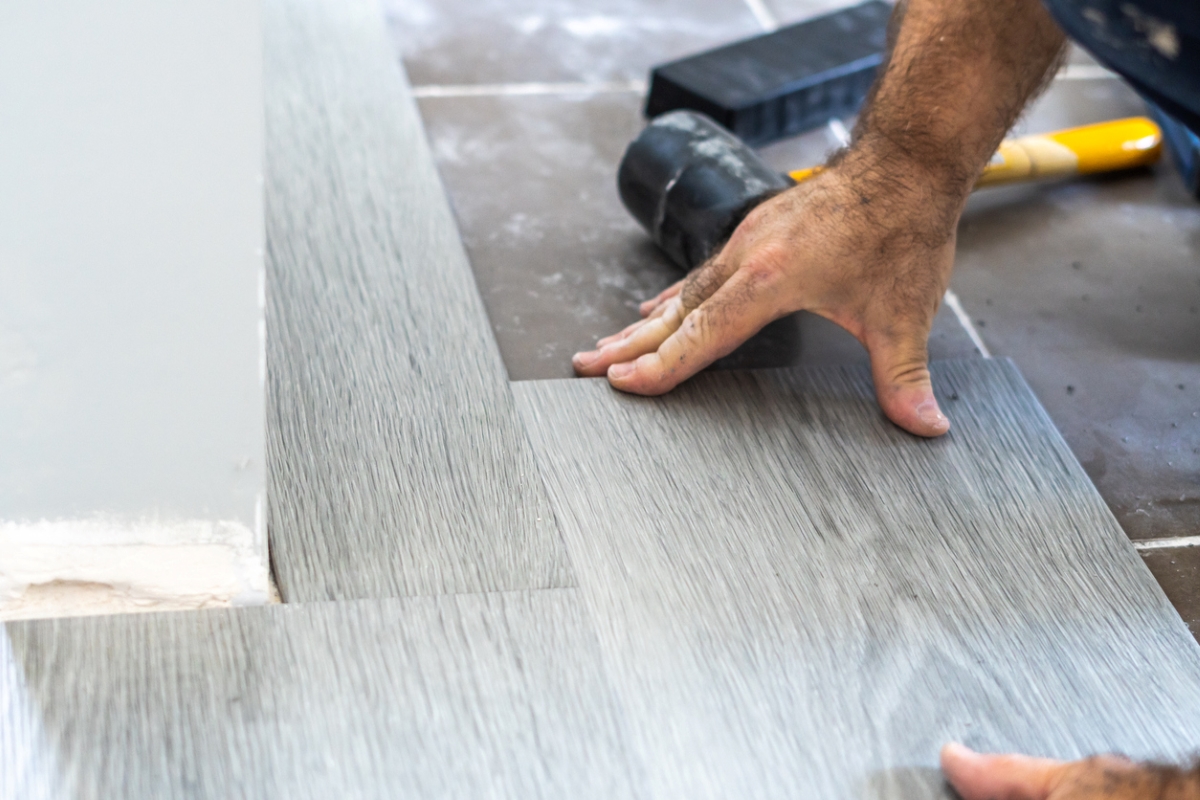
Use foil to salvage a loose vinyl floor tile. Position the errant tile in place on the floor, put a piece of foil on top, and run a hot clothes iron over the foil-covered tile a few times to melt the glue underneath. Lay a pile of books or bricks on top of the tile to hold it in place while the glue resets. Try the same trick to smooth out bumps and bulges in sheet vinyl flooring.
RELATED: The Best Vinyl Plank Flooring for Your Home
11. Store Steel Wool
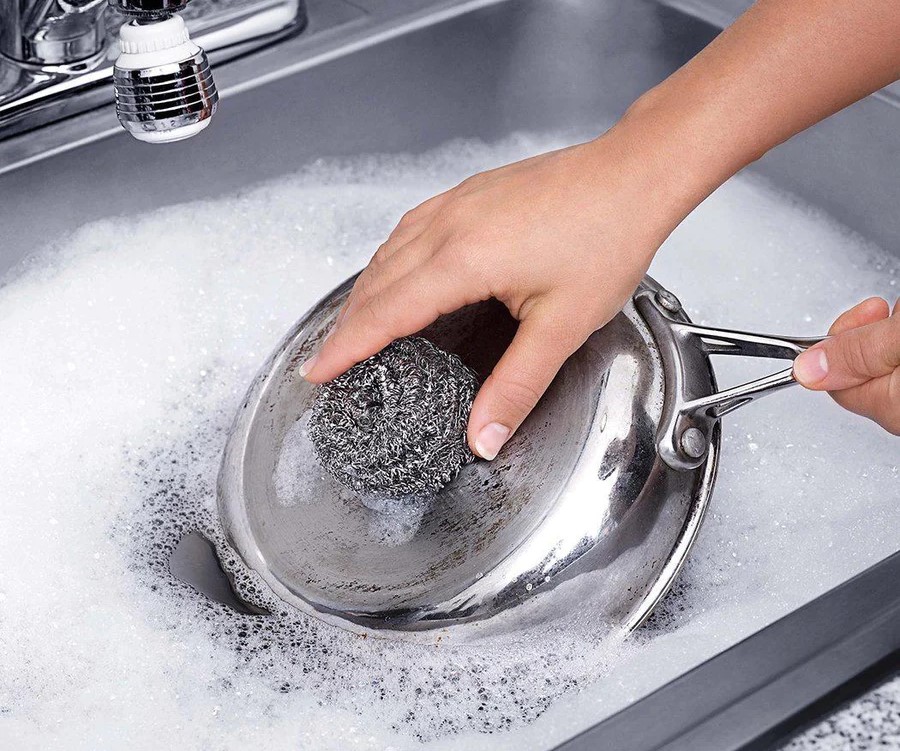
To extend the usable life of steel wool pads, store them on top of a crumpled ball of foil to prevent the steel wool from rusting. For longer-term storage, wrap the steel wool pad in foil and place it in the freezer.
RELATED: 17 Surprising Ways to Use Steel Wool Around the House
12. Reflect Heat

Improve the efficiency of radiators by making a DIY heat reflector out of foil. Tape a sheet of heavy-duty aluminum foil to a large piece of cardboard with the shiny side facing out and place it behind the radiator. The heat will bounce off the foil and into the room instead of being absorbed by the wall. If your radiators have covers on them, tape a piece of aluminum foil under the lid, shiny side down, to direct heat down and into the room.
RELATED: 11 Stylish Ways to Enhance—or Hide—Your Radiators
13. Polish Silver
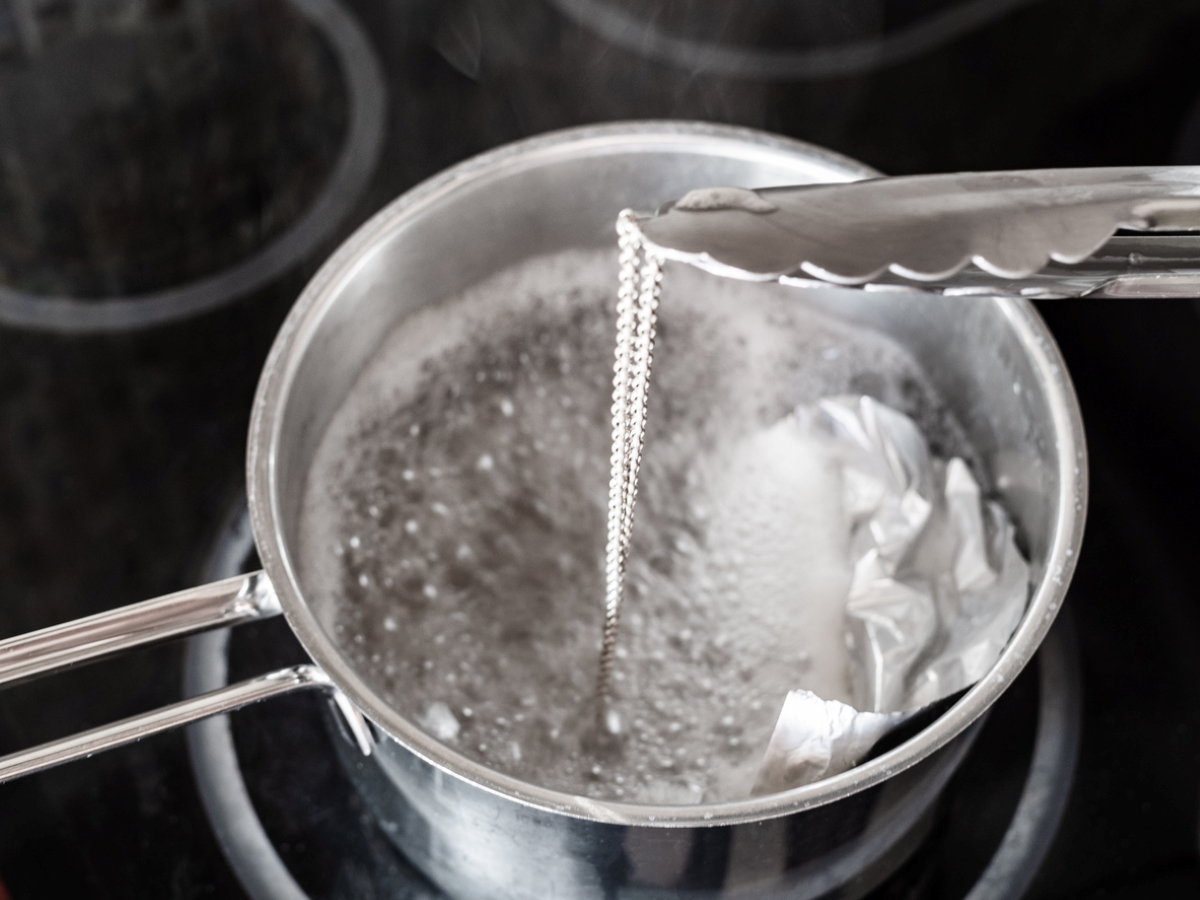
Polish your silver with your own homemade tarnish remover: Line a glass pan with foil and place the silver into the pan, making sure that each piece touches the foil. Add 4 cups of boiling water, followed by a quarter cup of baking soda; double or triple the recipe as needed to completely cover the silver. The mixture will start to foam, and the tarnish will adhere to the foil. The process will take several minutes, and heavily tarnished pieces may require several treatments.
Remove the silver from the pan, rinse it with clean water, and dry it with a soft cloth. Store the silver on a sheet of foil to avoid future tarnishing. This process is not recommended for silver-plated pieces.
RELATED: How To: Clean Silver Plate
14. Boost a WiFi Signal

If you’re struggling with weak WiFi, aluminum foil has got you covered. To make a makeshift reflector, cut a big enough piece of foil (about 12 inches or so), and gently mold it into a curved shape. You can use a 2-liter bottle to wrap the foil around it and make the shape of the bottle. Place the curved piece of foil behind external antennae on your router and the foil will reflect the signals.
15. Promote Seed Growth
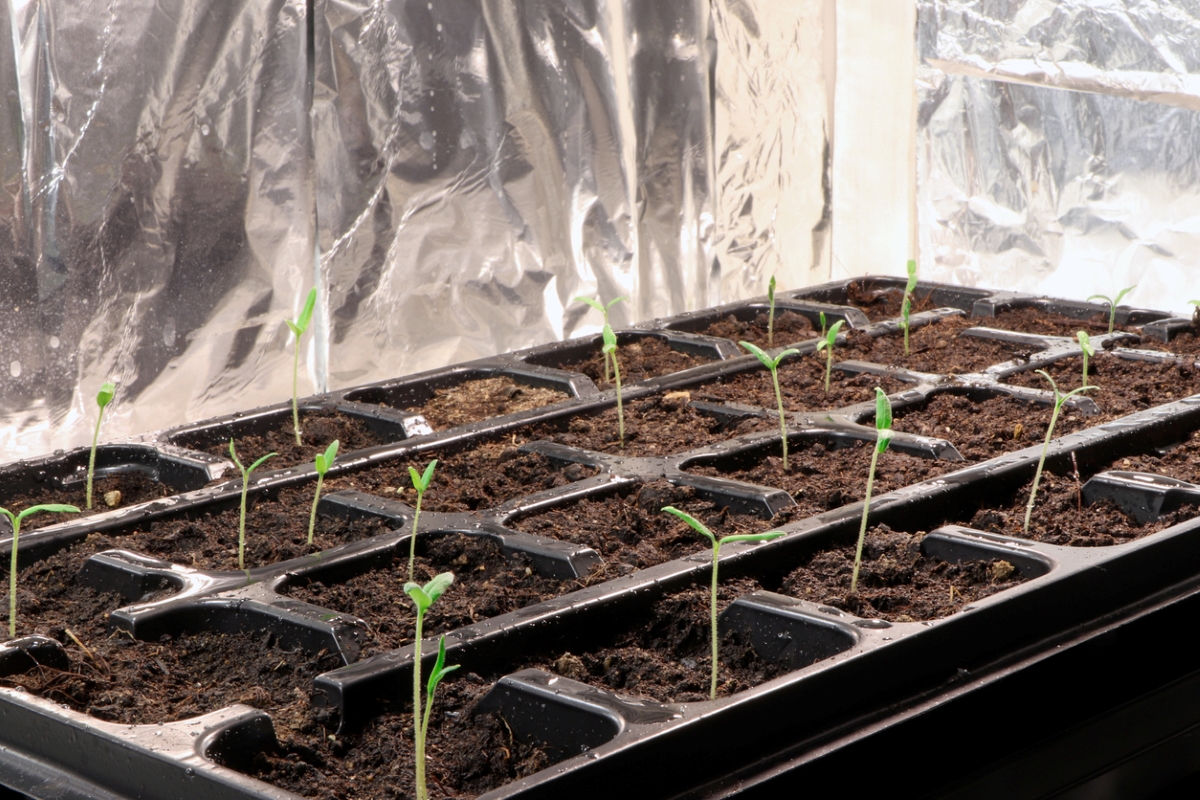
Line containers with aluminum foil, shiny side up, to boost heat reflection. This clever hack encourages optimal light distribution, aiding seed germination and solid growth. Simply cut a few pieces of foil to the size of your container(s) and press it in. You’ll want to poke a few holes in the bottom to allow the water to drain. Fill up your foil-lined container with soil and plant your seeds as usual.
You can use the same idea to increase light to one or more plants by lining a larger box with foil and setting the seeds trays or houseplant inside.
RELATED: Plant Propagation 101: Easy Techniques for Beginners
16. Deter Pests
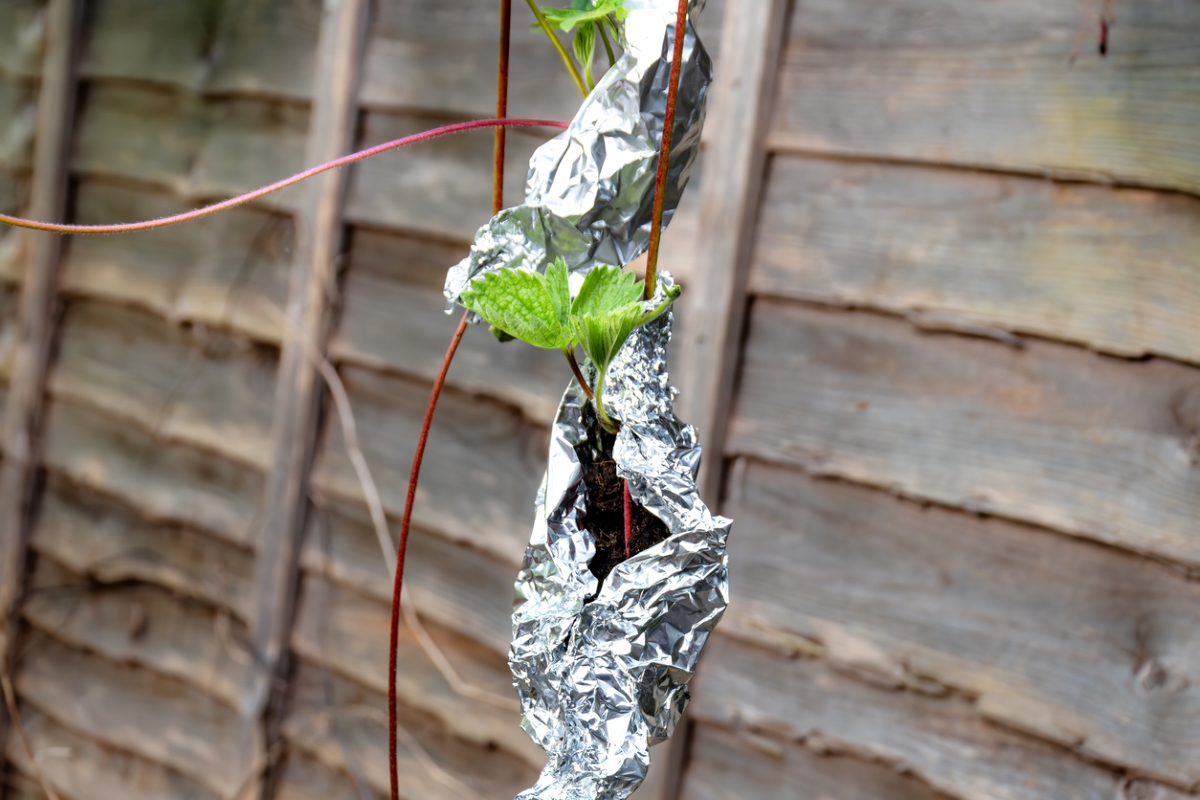
Foil can be an effective method to deter birds and pests from taking over your garden. Cut a few strips of foil and hang them on strings or stakes above your plants and lots, allowing the foil to flutter in the wind. The reflective surface will deter birds and other animals. (Pests like squirrels also hate the feel of foil under their feet or on their teeth.)
Wrapping the base of squash vines in about a foot of foil will also help prevent squash vine borers from laying eggs there and destroying the plant.
RELATED: 12 Little-Known Tricks to Make This Year’s Vegetable Garden a Success
17. Cook Over a Campfire
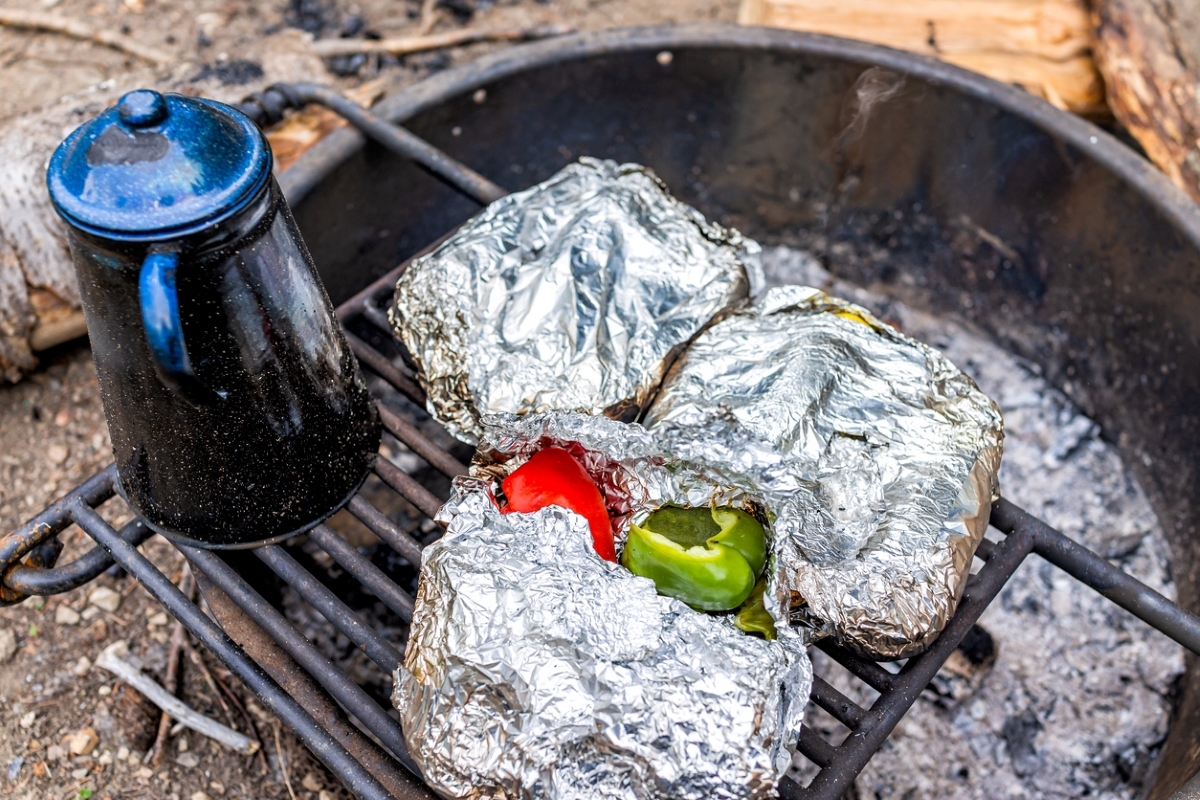
Cooking outdoors can be a breeze with a few sheets of aluminum foil. Simply wrap any seasoned veggies or meats in a couple layers of foil and place them on a few hot coals or in a fire pit. The foil acts as the perfect frying pan to cook ingredients to perfection. Note: Be sure to turn the food occasionally for even cooking, and add a chopped-up tablespoon of butter or some oil to foods that might stick before sealing the foil package.
RELATED: The Ultimate Backyard Camping Guide for Summer
18. Make Your Own Car Shade

With summer 2023 bringing record-breaking temperatures, the need for a sunshade takes on new importance. With a bit of aluminum foil and a few other materials, you can craft your own with ease. Grab a roll of foil, a piece of cardboard that fits the car’s windshield, some scissors, and a roll of duct tape. Cover (and tape) one entire side of the cardboard with foil, with the shiny side out. You can use the scissors to cut the foil in squares if needed. Keep your DIY sunshade in your car as you would a regular sunshade and keep your interiors cooler during the sweltering summer days.
RELATED: 12 Ways to Stay Cool When Your Car’s AC Gives Out
19. Protect Trees From Sunscald

Sunscald occurs when excessive sunlight causes blistering and peeling to tree bark and fruit. Trees such as maples and willows are more prone to sunscald damage in winter when they have dropped their leaves, exposing the trunk and branches. Protect your trees from sunscald as it can cause permanent damage to your tree. Wrap the trunk of the tree with aluminum foil with the shiny side out. Secure the foil with twine, and take it off during the tree’s growing season.
